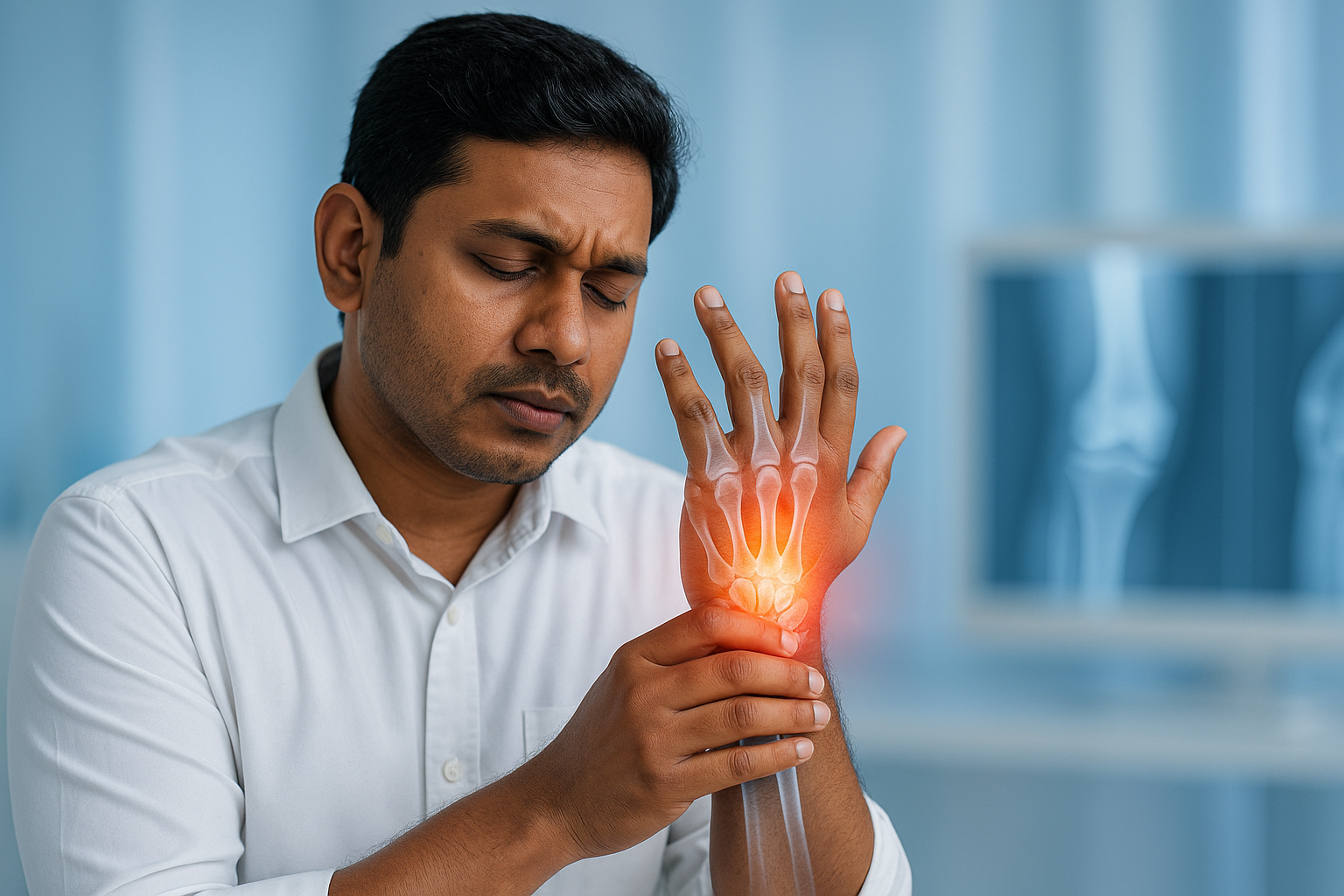Inflammatory Arthritis Treatment: A Clear Guide to Managing Joint Pain and Inflammation

Arthritis is a common condition that affects joints, causing pain, swelling, and stiffness. Among its many forms, inflammatory arthritis is caused by an overactive immune system. Treatment can feel overwhelming due to various options, but understanding the basics makes it easier. This guide simplifies treatment into four main approaches, making it easy for you to manage your care.
What Is Inflammatory Arthritis?
Inflammatory arthritis happens when the immune system mistakenly attacks the body’s joints—and sometimes other organs. This causes inflammation, pain, and long-term joint damage.
Unlike osteoarthritis, which results from wear and tear, inflammatory arthritis needs medications that calm the immune system and reduce inflammation over time.
4 Main Types of Inflammatory Arthritis Treatment
1. Immune-Modifying Medicines (DMARDs)
The core of arthritis treatment lies in medicines that control immune activity. These are called Disease-Modifying Anti-Rheumatic Drugs (DMARDs). They reduce inflammation, protect joints, and slow the disease.
Common DMARDs include:
- Steroids (e.g., prednisone) – Provide fast relief from inflammation
- Methotrexate – A widely used long-term immune-modifying drug
- Sulfasalazine – Reduces swelling and stiffness
- Hydroxychloroquine – Also used in lupus to calm immune responses
- Leflunomide & Mycophenolate mofetil – Used for stronger immune control when needed
- Types of DMARDs:
- Conventional Synthetic DMARDs – Methotrexate, sulfasalazine, hydroxychloroquine
- Biologic DMARDs – Advanced injectable drugs like adalimumab, infliximab, etanercept
- Targeted Synthetic DMARDs – Newer oral drugs like tofacitinib that block specific immune pathways
2. Non-Drug Therapies: Supporting Joint Health Naturally
In addition to medication, lifestyle-based therapies help reduce joint pain and improve flexibility.
Examples of non-drug treatments include:
- Physiotherapy – Exercise plans to strengthen muscles and improve movement
- Hot/Cold Therapy – Reduces pain and stiffness
- Assistive Devices – Insoles, braces, and supportive footwear for walking comfort
These options work best when combined with prescribed medications.
3. Surgical Treatment for Severe Arthritis
When joints are badly damaged or deformed, surgery may be needed to restore movement and reduce pain.
Common surgical options:
- Joint Replacement – Damaged joints like the knee or hip are replaced with artificial ones
- Corrective Surgery – Realigns bones in cases of deformities or unequal leg length
Surgery is considered when other treatments don’t provide enough relief.
4. Supportive Care for Side Effects and General Health
Long-term arthritis and its medications can affect other parts of the body. Supportive care is essential to protect overall health and avoid complications.
Supportive treatments include:
- Calcium and Vitamin D – Prevent osteoporosis caused by steroid use
- Iron, Vitamin B12, or Folate Supplements – Treat anemia, which is common in chronic arthritis
- Blood Pressure and Diabetes Management – Since chronic inflammation increases these risks
- Organ Monitoring – Protecting the kidneys, liver, and lungs from disease or drug effects
Conclusion: Take a Whole-Body Approach to Arthritis Care
Managing inflammatory arthritis involves more than just taking medicine. The right combination of immune-modifying drugs, physical therapies, surgical solutions, and supportive care can help you stay active and pain-free.
Summary of the 4 Key Treatment Types:
- Immune-Modifying Medicines (DMARDs)
- Non-Drug Therapies (physiotherapy, braces)
- Surgical Treatments (joint replacement or corrections)
- Supportive Care (supplements, organ support)
Early diagnosis and personalized treatment from a rheumatologist can greatly improve long-term outcomes. Don’t wait—take control of your joint health today.


